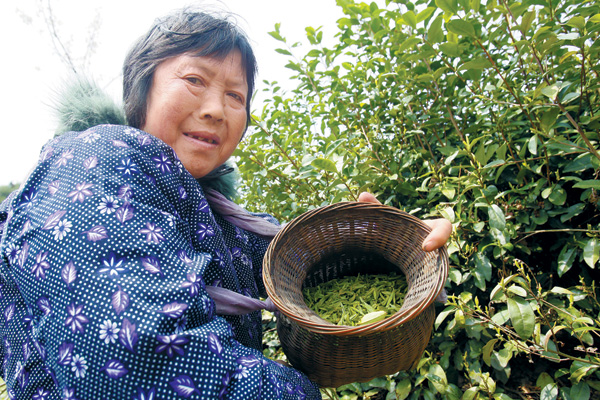Early tea chase
Updated: 2012-04-01 07:38
By Xie Yu and Zhang Jianming (China Daily)
|
||||||||
Mingqian tea is known for its tender buds and rich fragrant bouquet, and it's valued for its quality.
However, the temperatures before Qingming are generally low and often unpredictable. The tea shoots are few, and they grow slowly. Few shoots actually meet the exacting standards that are set. They have to be plucked before they harden and mature, but must still be flavorful enough. Thus, Ming- qian tea is pretty rare.
Because of its value, tea producers have not stopped trying to bring forward the normal harvest time of the spring tea, catering to the Chinese tea drinkers' obsession for tasting the first buds of spring.
This commercial opportunity has stimulated experiments, many of them aided by modern technology.
Growing tea in the controlled climate of a greenhouse is no picnic. Many tea producers have tried the method in an attempt to force the bushes to set buds.
But while the greenhouse environment can prompt early budding of the tea, the buds tend to be weak and pale and do not have the aroma needed for a good infusion.
To counter the weaknesses and improve the quality of their early teas, Shao and his companions completed many experiments on temperature, light, humidity and the acidity of soil - all crucial to tea growing.
After five years, they succeeded in bringing forward the harvest by a month. But what mattered most was that their tea buds were fat and vigorous with the requisite bouquet and taste that tea connoisseurs wanted - even after three brews.
 |
|
Chun'an tea pickers work long hours for fresh tea leaves. |

 Relief reaches isolated village
Relief reaches isolated village
 Rainfall poses new threats to quake-hit region
Rainfall poses new threats to quake-hit region
 Funerals begin for Boston bombing victims
Funerals begin for Boston bombing victims
 Quake takeaway from China's Air Force
Quake takeaway from China's Air Force
 Obama celebrates young inventors at science fair
Obama celebrates young inventors at science fair
 Earth Day marked around the world
Earth Day marked around the world
 Volunteer team helping students find sense of normalcy
Volunteer team helping students find sense of normalcy
 Ethnic groups quick to join rescue efforts
Ethnic groups quick to join rescue efforts
Most Viewed
Editor's Picks

|

|

|

|

|

|
Today's Top News
Health new priority for quake zone
Xi meets US top military officer
Japan's boats driven out of Diaoyu
China mulls online shopping legislation
Bird flu death toll rises to 22
Putin appoints new ambassador to China
Japanese ships blocked from Diaoyu Islands
Inspired by Guan, more Chinese pick up golf
US Weekly

|

|






